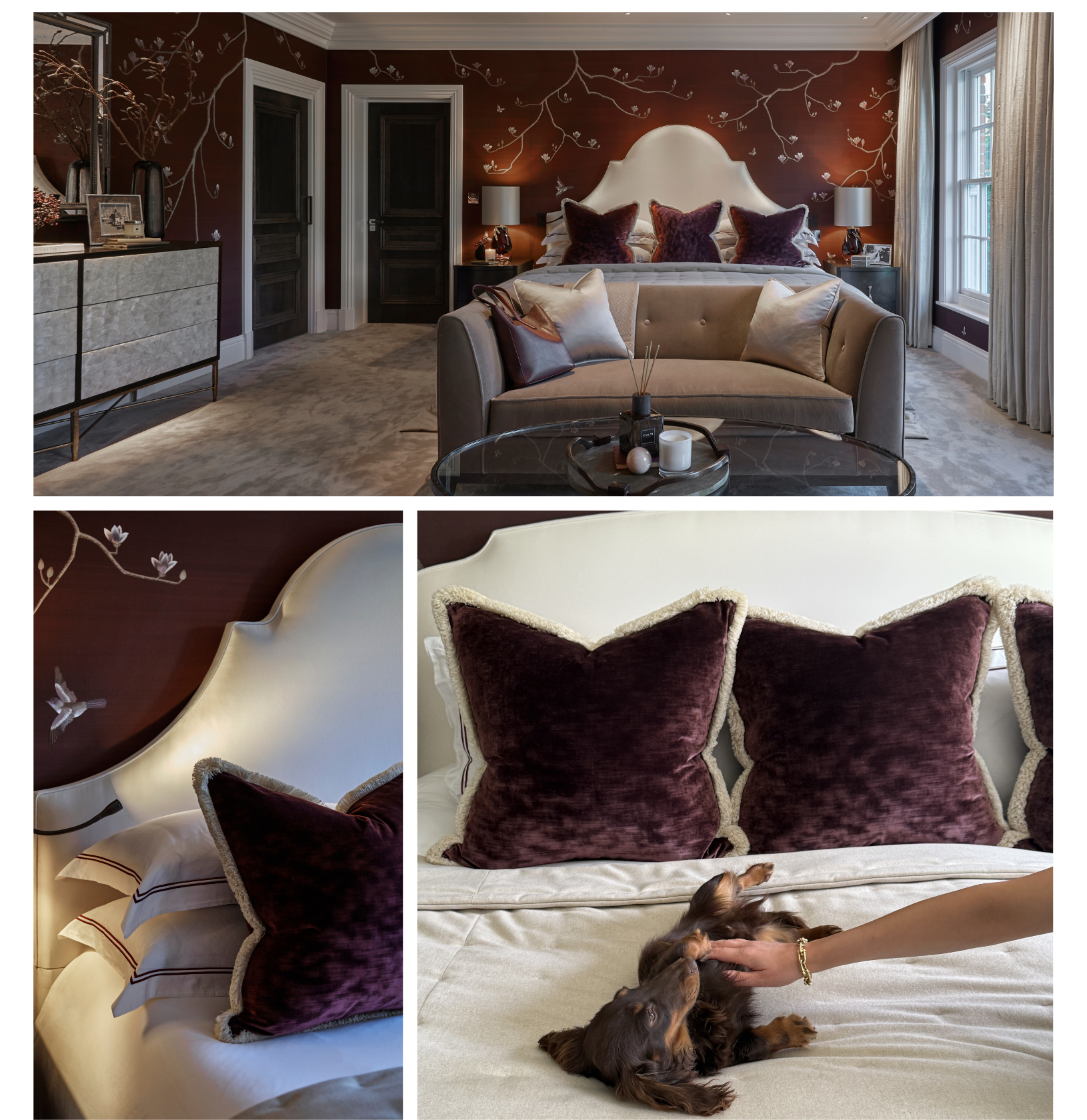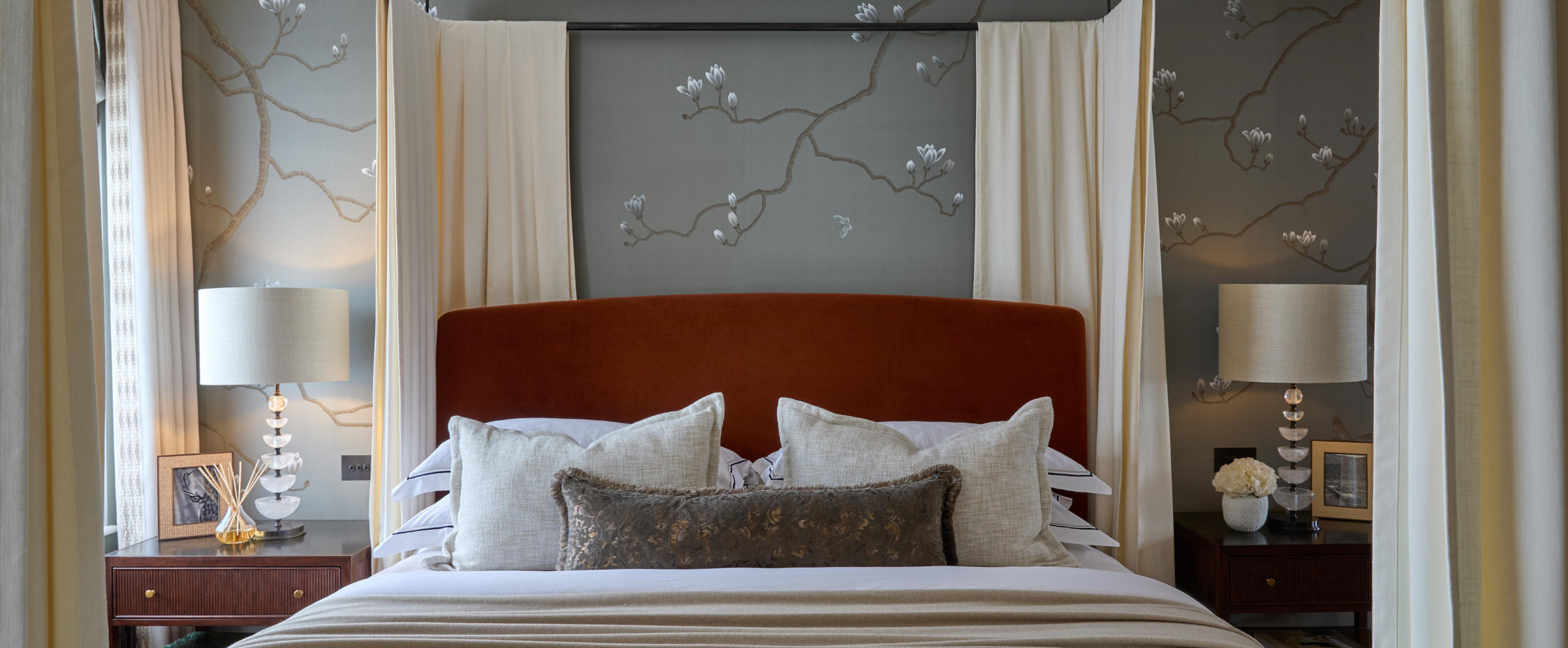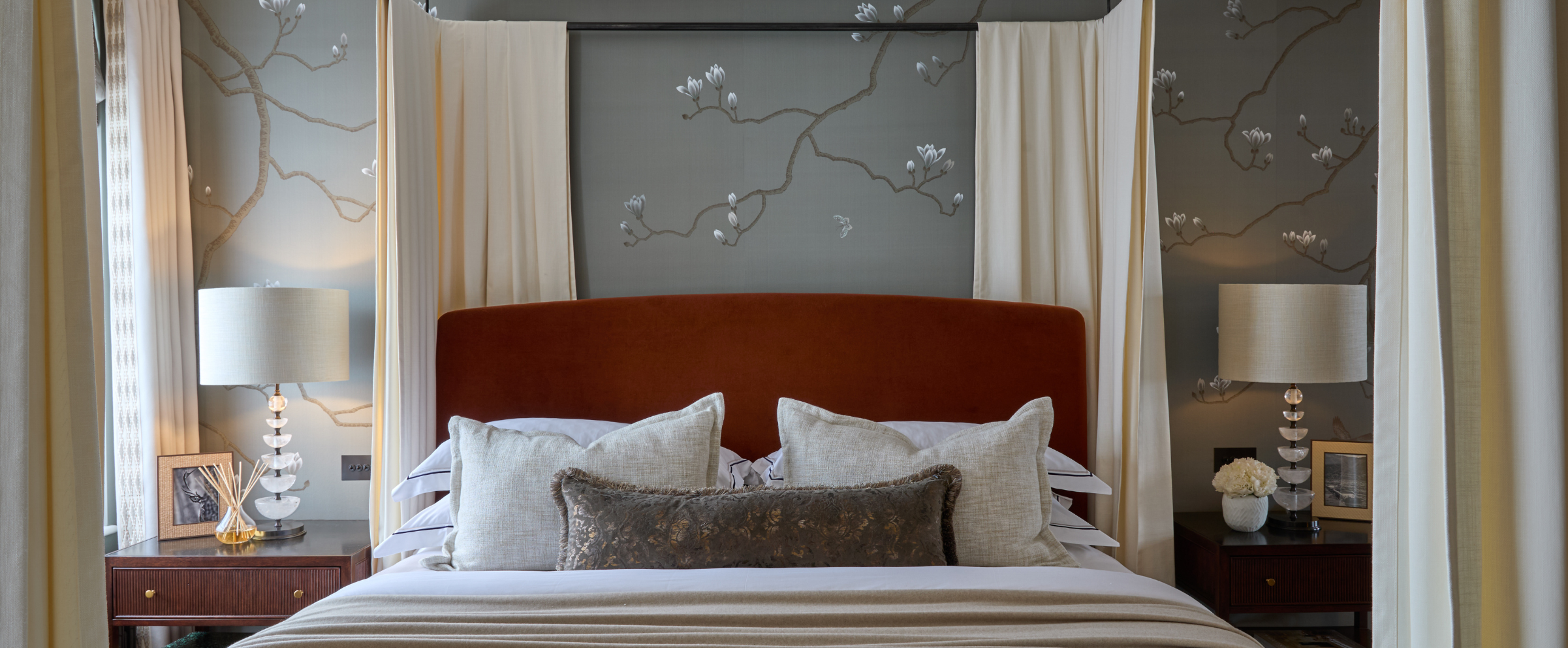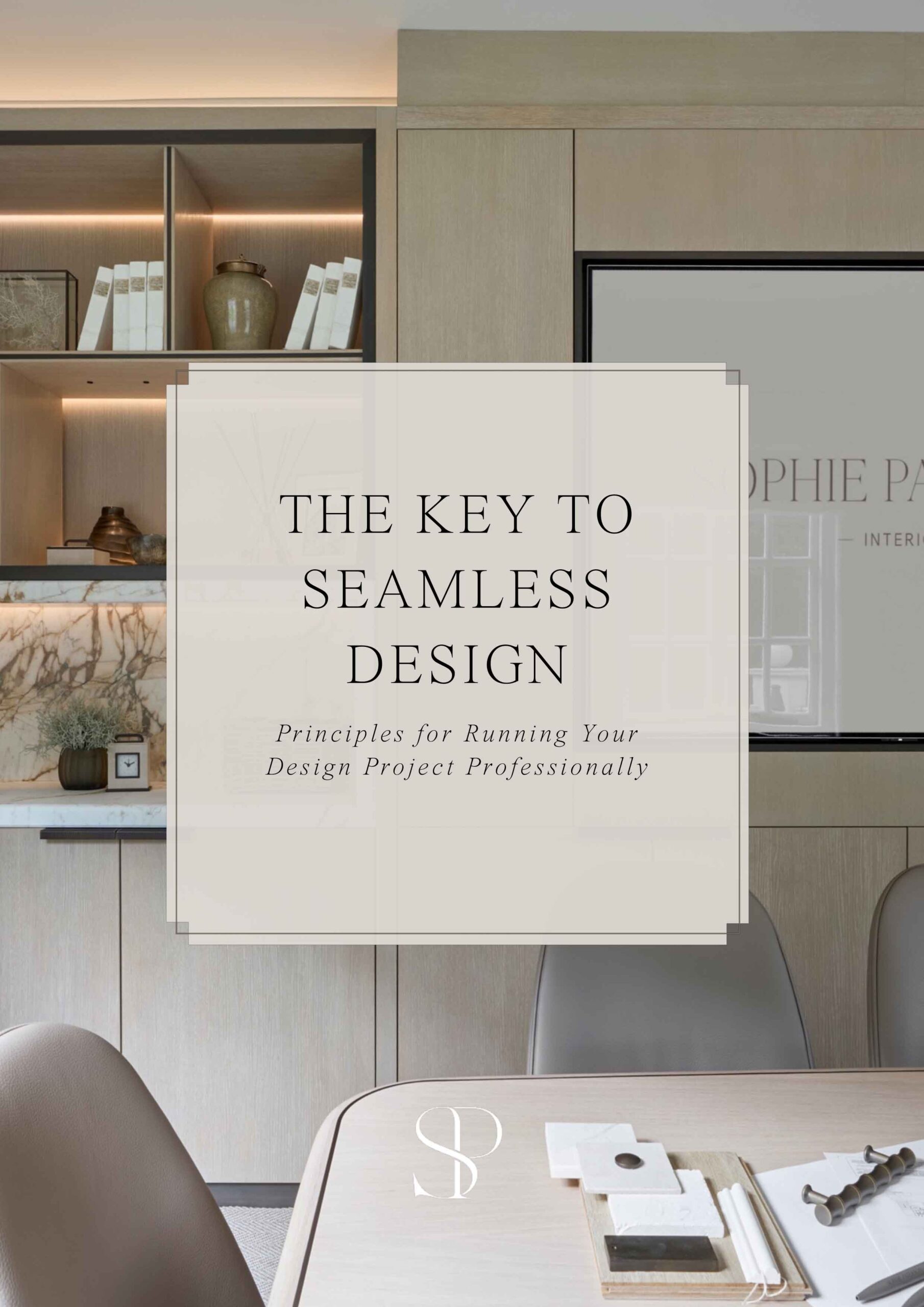Last week marked an incredible milestone for me, the launch of the Sophie Paterson Academy, my online interior design course. It was a whirlwind week filled with excitement, nerves, and so much gratitude for the community that’s already embracing the Academy.
Amid the launch buzz, I found myself craving calm, and nowhere feels more vital for that than the bedroom.
Designing a truly restful bedroom isn’t just about pretty decor. It’s a thoughtful process where every detail, from light to scale, shapes how you feel in the space.
Inside the Bedroom module of the Academy, I guide students through this entire process, step by step.
Today, I’m sharing…
FIVE EXPERT TIPS FROM THE COURSE THAT GO BEYOND BASIC STYLING AND REVEAL WHAT REALLY MAKES A BEDROOM FEEL EFFORTLESS AND CALM
1. CONSIDER THE ROOM’S ORIENTATION
Master the Light to Master the Mood
One of the most often overlooked steps is understanding how natural light impacts your colour choices, and ultimately, the room’s atmosphere.
- North-facing rooms get cooler, softer light that can make colours look flat or dull. Warm, inviting tones like soft beige, blush pink, or muted terracotta counteract this, adding warmth and depth.
- South-facing rooms bask in brighter, warmer light that makes cool tones like blues, greens, or greys feel fresh without becoming cold.
The key here is testing. Always bring paint samples into the actual room and observe them at different times of day. The way colours read in the morning can be completely different by afternoon or evening. This simple step saves costly mistakes and creates a colour palette that supports rest and relaxation.

2. DON’T SHY AWAY FROM A LARGER BED: THE LUXURY OF INTENTIONAL SCALE
It’s easy to assume that small bedrooms require small beds, but a larger bed can actually make a compact space feel intentional and luxe, if done right.
The trick is balance. Leave enough room for circulation and essential furniture like bedside tables. A generously sized bed anchors the room, signalling comfort and purpose.
But this tip goes beyond dimensions, it’s about understanding who the bedroom is for. What do they prioritise? Do they want a place that’s a sanctuary for sleep, a cozy nook to read, or a space that doubles as a home office?
In the Academy, we teach you how to uncover these needs through a detailed briefing process, ensuring every design choice serves the client’s lifestyle.

3. MAKE LIGHTING PERSONAL
Lighting should do more than illuminate a space, it should support the rhythms of your day and night.
For example, many couples wake at different times. A motion-activated low-level light near the floor can provide gentle visibility for the early riser without disturbing their partner’s sleep. Layered lighting, ambient, task, and accent, is key.
We explore how to build lighting schemes that work intuitively, asking important questions:
- When do you wake and sleep?
- Do you read in bed?
- Are there children or pets who might come into the room at night?
Answering these helps create lighting that feels natural and supportive, not harsh or disruptive, thus, creating a restful bedroom.

4. SCALE YOUR HEADBOARD
Small Details Make Big Differences.
Often underestimated, the headboard’s size can transform the entire room’s balance. Many standard headboards are simply too short, once your bed is fully dressed with pillows and throws, they disappear.
We recommend a headboard height of at least 120cm from the floor. This ensures it remains a striking, anchoring feature that visually grounds the bed in the space.
In The Sophie Paterson Academy, I show how to spot when a headboard is undersized and offer tips on sourcing or designing pieces that fit your room’s proportions perfectly. This one adjustment elevates the room’s sophistication instantly, creating a tranquil and resultful bedroom.

5. CREATE INTIMACY IN LARGE BEDROOMS
Large bedrooms can feel cold or impersonal if not designed with scale and structure in mind. One of my favourite solutions is a four-poster bed. It helps reclaim space by drawing the eye upward and creating a sense of enclosure.
When draped with sheer or lightweight fabrics, the four-poster adds softness and quiet elegance, transforming a sprawling room into a restful retreat.
This approach combines architectural impact with textural layering, creating a bedroom that feels both grand and inviting.

These five tips are just the beginning in your interior design journey to create a restful bedroom. The Bedroom module of The Sophie Paterson Academy goes far beyond decoration.
You’ll learn how to:
- Build a clear, structured brief based on your client’s lifestyle or your own needs
- Ask the right questions to inform every decision
- Approach colour, light, scale, and texture methodically
- Create a cohesive design that balances comfort, beauty, and practicality
Whether you’re designing for yourself or others, these tools will help you create a bedroom that truly restores.
If you’d like to see how these principles come to life in a real space, I’d love for you to watch my Luxury Bedroom Reveal on YouTube. It’s a personal tour of my own bedroom, designed with all these ideas in mind.
For more inspiration, explore our portfolio to see how I translate timeless design principles into distinctive, character-filled homes. For exclusive behind-the-scenes content, including project reveals, product collaborations, and more insights into our design process, subscribe to our YouTube channel.
And for daily inspiration, updates, and a closer look at life inside the studio, follow us on Instagram @sophiepatersoninteriors and Tik Tok @sophiepatersoninteriors



